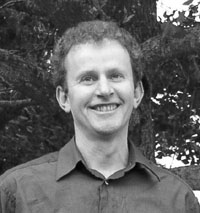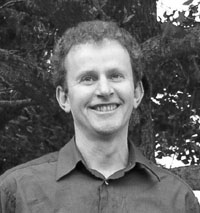Rudolf Steiner kindergartens look set to cash in on free early childhood education initiatives.

The plan of Education Minister Steve Maharey to provide 20 hours of free early childhood education reminds us that New Zealand has a wide variety of preschools, based on diverse philosophies. Perhaps the weirdest is Waldorf-Steiner schooling, which was founded by the loopy Austrian, Rudolf Steiner (1861-1925).
Hundreds of schools and even more kindergartens in scores of countries follow Steiner’s system. Established in 1950, the Hastings Rudolf Steiner School and Kindergarten was the first Waldorf centre of education in New Zealand. The Federation of Rudolf Steiner Waldorf Schools was formed as an incorporated society in 1988 and lobbies the government. Today, the country has 10 Steiner-Waldorf schools or school initiatives and almost 40 Waldorf kindergarten groups. The Government gave most of them money from you and me even before Maharey’s scheme started.
The education they offer is based on the notions of Rudolf Steiner, the founder of anthroposophy. He believed humanity is living in the post-Atlantis period, which started with the sinking of Atlantis in 7227 BC. After the current European-American epoch ends in the year 3573, humans will regain the psychic powers they had before the time of the ancient Greeks. Steiner claimed to be the earthly ambassador of the world-encompassing spirit of our time, St Michael. According to Steiner, a hierarchy of angels and archangels influence earthly developments. Seven leading archangels take turns to guide the evolution of humanity for 354 years at a time. St Michael’s stint as “time spirit” started in late November 1879, and Steiner declared that he himself had accepted the mission of being the Michaelic Initiate, to help guide the spiritual life of the Western World. This was an event of world historic importance that took place unnoticed. Anthroposophists regard Steiner with awe and reverence. They are as gullible as Mormons.
Anthroposophy can involve bizarre behaviour. For example, some anthroposophists sit alone or in groups to read to departed souls in order to form links from our sense-perceptible world to the “so-called dead”. They claim to receive messages of “Thank you”. Some anthroposophists ask questions of Steiner himself. Occasionally statements are circulated that allegedly came from him. The feeling that such a message evokes of loosening one’s being from the physical body is a sign that the communication is genuine.
Steiner devoted time to many interests, including education, poetry, architecture, jewellery design, astrology, biodynamic agriculture, reincarnation, karma, medicine and the creation of what he called a new art, eurythmy (mime and movement). All these topics he treated in spiritual terms. Eurythmy, for example, is supposed to manifest spiritual states of being, calling upon influences from past lives and preparing for future lives.
The benefits of anthroposophical medicine are wildly exaggerated. The pricey Helios Therapeutic Retreat in Hawkes Bay sells eurythmy, massage, music and art therapy. Although perhaps nice, these pursuits will not cure any diseases. Patients who need a loan to meet the thousands of dollars in fees are referred to a finance company in Napier. In 1921 Steiner himself started a business called Weleda that has spread internationally, selling useless ‘natural’ medicines with a spiritual approach. Waldorf schools have a reputation for opposing childhood vaccinations.
Waldorf kindergartens are based on the belief that there is a spiritual side to all of life. They focus on free play, art and craft, fairy stories, myths, eurythmy, and circle time for festivals such as Michaelmas. Waldorf teachers use the ancient idea of four temperaments (choleric, phlegmatic, melancholic and sanguine) to categorise children. They might seat pupils in the classroom according to their supposed type. The Steiner approach is sometimes called racist. He believed that souls pass through stages, including racial stages, with African races being lower than Asian races and European races being the highest form. Steiner education stresses fantasy and dreaminess, which anthroposophists associate with spontaneous clairvoyance. Other quirks of the system include teaching reading late and the banning of computers until high school. Television, radio and recorded music are excluded. While this approach can stimulate imaginations, it also is based on false and nutty ideas. I wonder how many New Age people and followers of alternative healers were handicapped in grasping reality because they went to a Steiner school.








